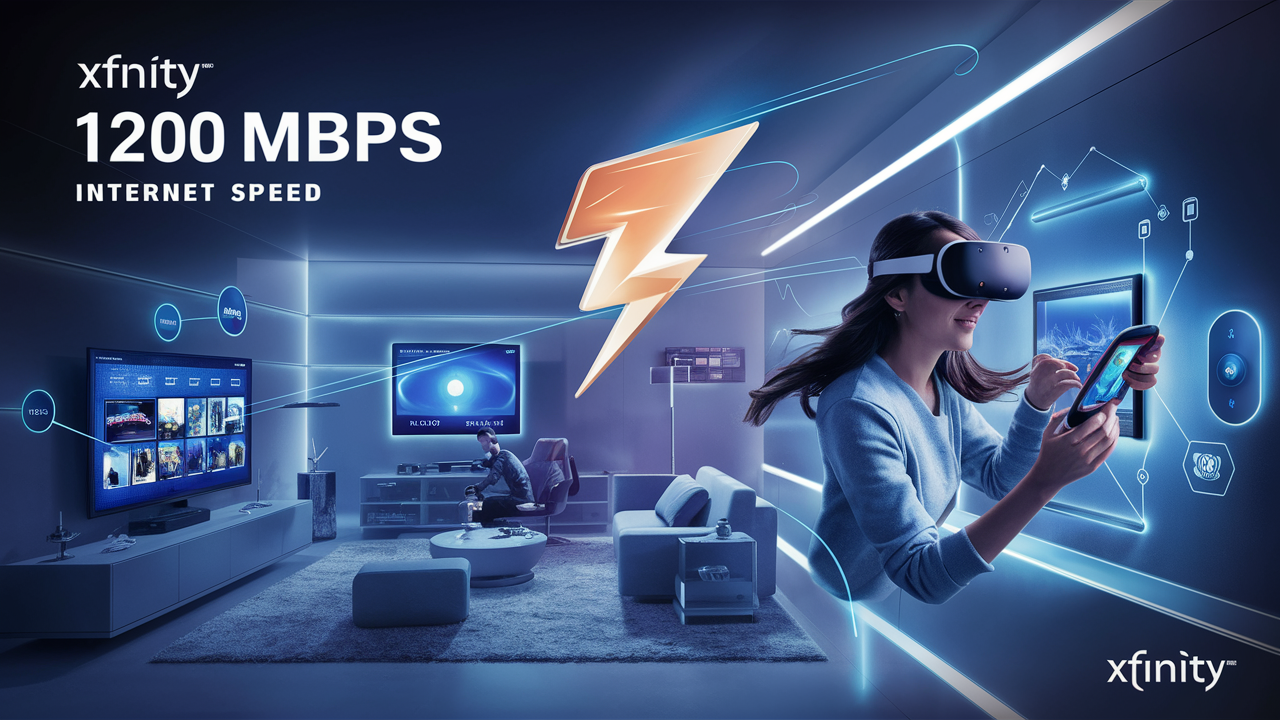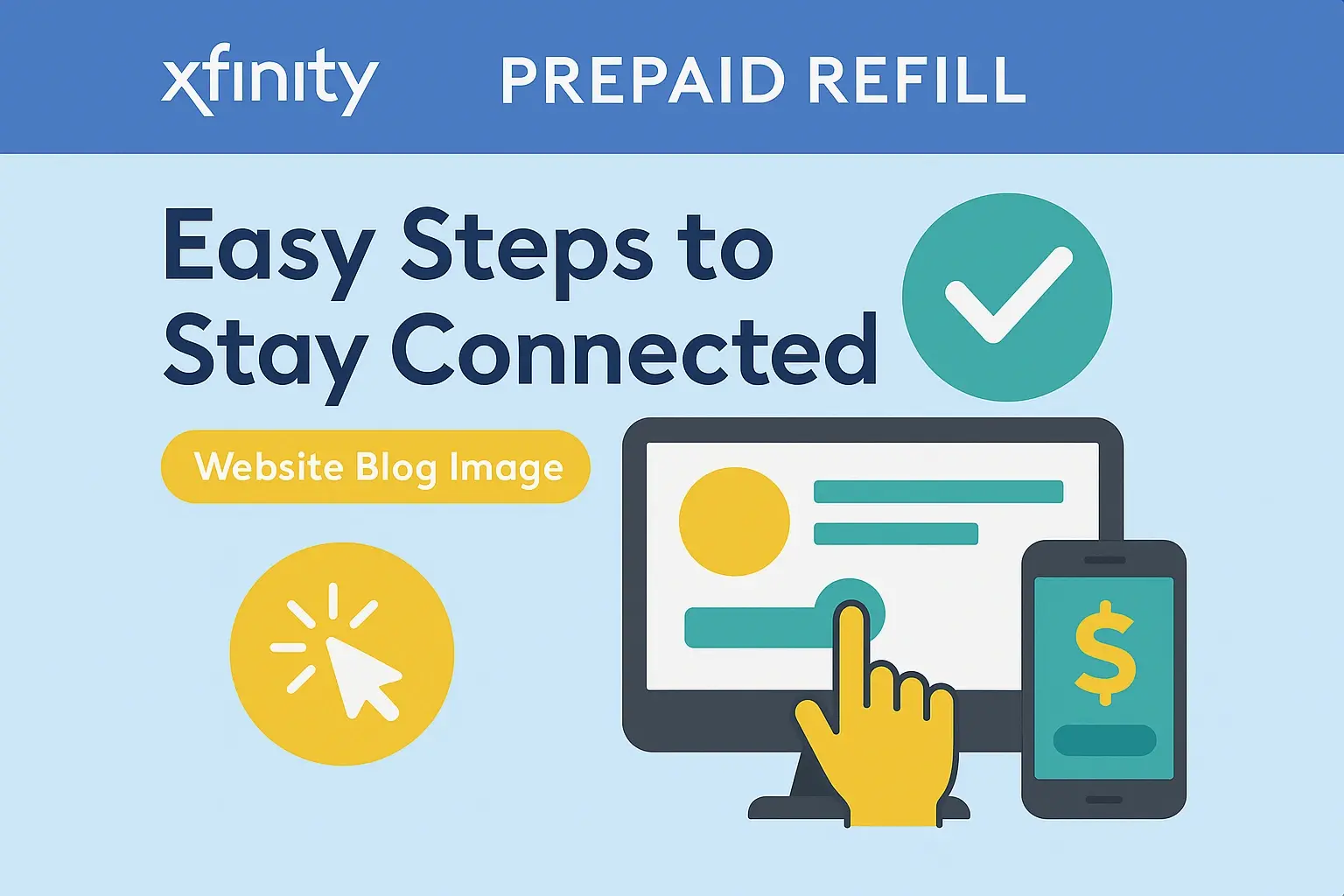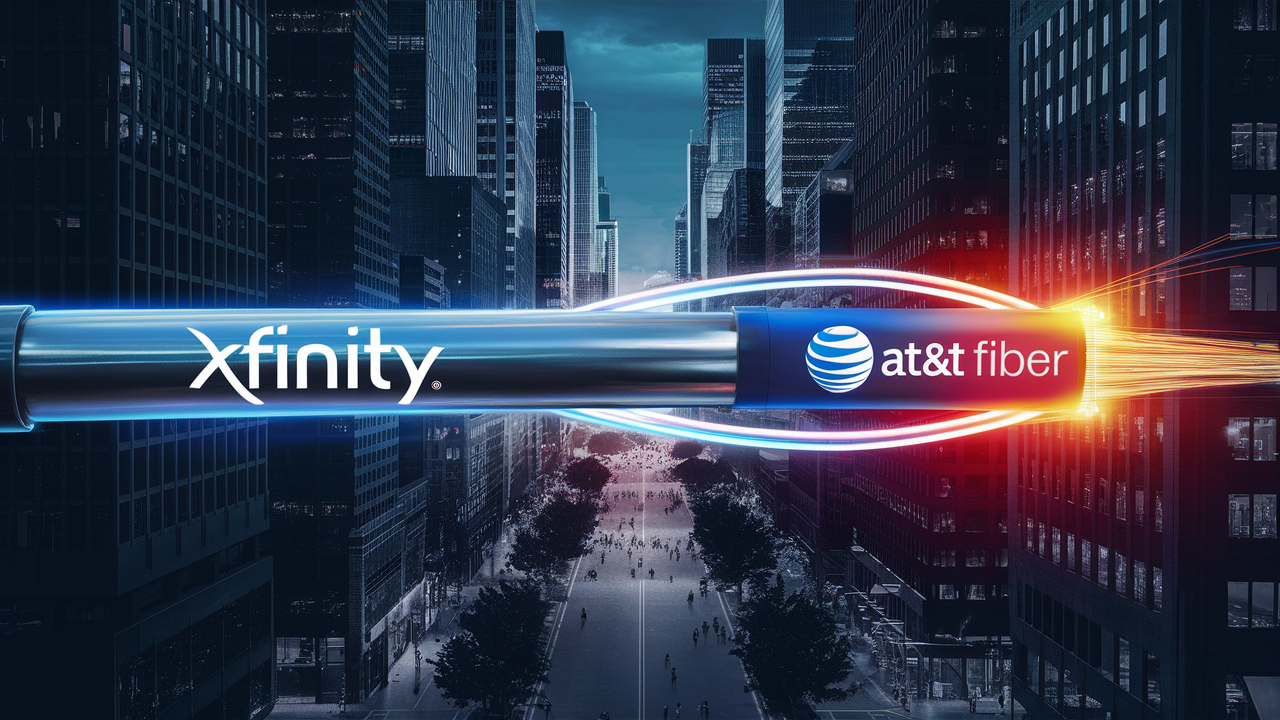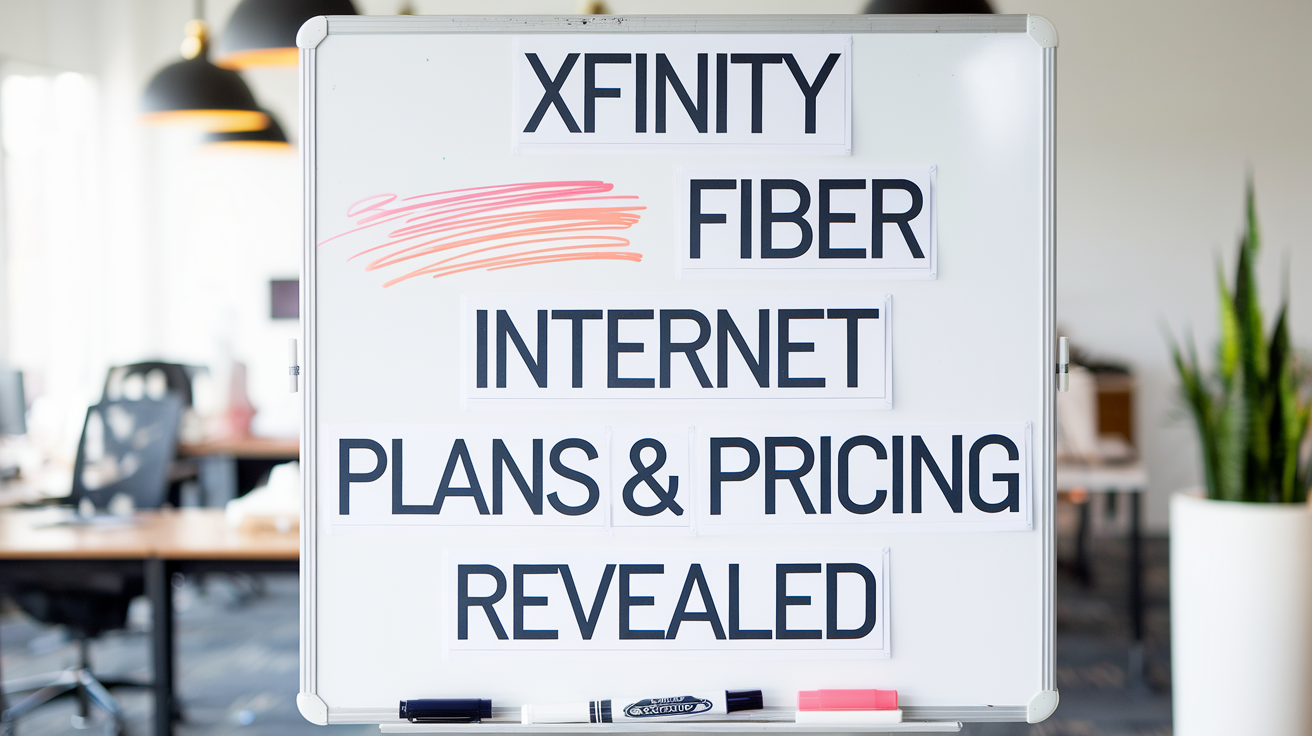How much is Xfinity 1200 mbps per month?

Understanding the cost of Xfinity's 1200 Mbps internet plan is crucial for many households seeking high-speed connectivity. This guide breaks down the pricing, potential fees, and factors influencing the monthly bill, helping you make an informed decision about this powerful internet service in 2025.
Understanding Xfinity 1200 Mbps Pricing
The question "How much is Xfinity 1200 Mbps per month?" is multifaceted, as Xfinity's pricing structure is not a single, static figure. Several variables come into play, making it essential to understand the nuances before committing. In 2025, Xfinity, a subsidiary of Comcast, continues to offer its Gigabit Pro service, which often includes speeds of 1200 Mbps or even higher in specific areas, alongside its more widely available Gigabit internet tiers. The advertised price for Xfinity 1200 Mbps can range significantly, typically from around $70 to $100 per month for the internet service alone. However, this is often an introductory or promotional rate that may not last beyond the initial contract period. Understanding the base rate, any equipment rental fees, taxes, and other potential surcharges is critical for accurately estimating your monthly expenditure. Many users find that while the headline price seems attractive, the final bill can be considerably higher. This guide aims to demystify these costs and provide a clear picture of what to expect when signing up for Xfinity's high-speed internet offerings.
The Base Price: What to Expect Initially
When you first look at Xfinity's offerings, you'll likely see a base price for their 1200 Mbps internet plan. This price is often presented as an attractive entry point, designed to capture new customers. For 2025, these introductory prices for plans that offer 1200 Mbps or close to it (sometimes branded as "Gigabit" or "Gigabit Extra" which might be slightly lower but still very fast) typically fall within the range of $70 to $85 per month. This price is almost always contingent on signing a contract, usually for a 12-month or 24-month term. Without a contract, the price can jump significantly, sometimes by $20 to $30 per month or more. It's crucial to distinguish between plans that *offer* 1200 Mbps and plans that are *specifically branded* as 1200 Mbps. Xfinity's "Gigabit Pro" service, which is their highest tier, can indeed deliver symmetrical 2,000 Mbps (2 Gigabits per second) download and upload speeds, but this is a premium service with a higher price point and limited availability, often requiring professional installation. The more common "Gigabit" or "Gigabit Extra" plans might offer speeds up to 1000 Mbps or 1200 Mbps download, with significantly lower upload speeds, and these are the plans most consumers will encounter when inquiring about 1200 Mbps service.
Contract vs. No-Contract Pricing
The difference between contract and no-contract pricing for Xfinity 1200 Mbps plans is substantial. A 12-month or 24-month agreement locks you into a specific rate for the duration of the contract. This is usually the most cost-effective way to secure the advertised price. For instance, a plan advertised at $75/month might require a 24-month agreement. If you opt for a month-to-month plan, the same service could cost $95 to $105 per month, or even more. This flexibility comes at a premium. While month-to-month plans offer freedom from long-term commitments, they can lead to higher overall costs if you plan to stay with the provider for an extended period. For many, the security of a locked-in price, even with a contract, is preferable to the unpredictability of month-to-month rates, especially for a high-demand service like 1200 Mbps internet.
What is Included in the 1200 Mbps Plan?
When you subscribe to an Xfinity 1200 Mbps plan, you're primarily purchasing internet access. This means a certain download speed, which is the speed at which data is transferred from the internet to your devices. For a 1200 Mbps plan, this translates to a theoretical maximum download speed of 1200 megabits per second. This speed is incredibly fast and is designed for households with multiple users, numerous connected devices, and demanding online activities such as 4K streaming, online gaming, large file downloads, and extensive video conferencing. However, it's crucial to understand that the advertised speed is the *maximum* speed. Actual speeds can vary due to network congestion, the quality of your home wiring, the capabilities of your own equipment (modem, router, devices), and the specific technology Xfinity uses in your area (e.g., DOCSIS 3.1). For most users, the 1200 Mbps download speed is more than sufficient for even the most intensive internet usage. Upload speeds, which are critical for activities like video calls, uploading large files, and online gaming, are typically much lower on these plans, often ranging from 35 Mbps to 50 Mbps. This asymmetrical speed is a common characteristic of cable internet services. Xfinity's higher-tier plans, like Gigabit Pro, do offer symmetrical speeds, but these are distinct and more expensive offerings.
Download vs. Upload Speeds
The distinction between download and upload speeds is paramount when evaluating internet plans. A 1200 Mbps plan primarily boasts its download capacity. This means you can pull data from the internet to your home at an astonishing rate. For example, downloading a large movie file (say, 5 GB) could theoretically take less than a minute. However, upload speed refers to the rate at which you send data from your home to the internet. For Xfinity's standard 1200 Mbps plans (often referred to as Gigabit or Gigabit Extra), the upload speeds are considerably lower. You might see advertised upload speeds of around 35 Mbps, 40 Mbps, or 50 Mbps. While this is adequate for basic tasks like sending emails or posting on social media, it can become a bottleneck for activities requiring significant data transmission upstream. Professional content creators, heavy streamers who interact with their audience in real-time, or individuals who frequently upload large video files or back up extensive data to cloud services might find these upload speeds limiting. If symmetrical speeds are a priority, you would need to explore Xfinity's premium Gigabit Pro service or consider fiber optic providers, which typically offer equal download and upload speeds.
Data Caps and Overage Charges
One of the most significant considerations with Xfinity internet, beyond the base price, is its data cap policy. As of 2025, Xfinity generally imposes a data cap of 1.2 terabytes (TB) per month on most of its internet plans, including the 1200 Mbps tier. This is a substantial amount of data, and for many households, it's more than enough. However, if you exceed this limit, you will incur overage charges. Xfinity offers two options to handle data usage beyond the cap: either pay $10 for each additional 50 GB block of data, up to a maximum of $100 per month, or purchase the Unlimited Data Option for an additional monthly fee. This Unlimited Data Option typically costs around $30 per month on top of your internet bill. Therefore, if you are a heavy internet user who streams extensively in 4K, downloads large files frequently, or has multiple devices constantly consuming data, you must factor in the potential cost of exceeding the data cap or the expense of the unlimited data add-on. For a 1200 Mbps connection, the temptation to use that bandwidth freely is high, making data management or the unlimited option a crucial part of the overall cost calculation.
Factors Influencing the Monthly Cost
The sticker price for Xfinity 1200 Mbps is rarely the final amount you'll pay. Several factors can significantly influence your monthly bill, making it essential to look beyond the advertised rate. These factors include the length of your contract, whether you rent or own your modem and router, the presence of promotional discounts, the inclusion of additional services, and unavoidable taxes and fees. Understanding each of these components will give you a more accurate picture of your total monthly expenditure and help you avoid surprises. For instance, a plan advertised at $75 might end up costing $90 or more once equipment rental and fees are added, even before considering potential data overages or unlimited data add-ons. It's a common practice for internet service providers to present an attractive base price while relying on these additional charges to increase revenue. Therefore, a thorough investigation into all potential costs is paramount before signing up.
Equipment Rental Fees
One of the most common additional costs associated with Xfinity internet is the equipment rental fee. Xfinity typically requires you to use their proprietary modem and router (often combined in a single gateway device) to access their network. While you can purchase your own compatible modem and router, many users opt to rent from Xfinity. As of 2025, the monthly rental fee for Xfinity's gateway device can range from $15 to $20 per month. This fee is charged regardless of whether you use the equipment for the entire billing cycle. Over the course of a year, this can add up to $180 to $240 in rental costs. If you plan to keep your Xfinity service for an extended period, investing in your own compatible equipment can be a more cost-effective solution in the long run. However, it's important to ensure that any purchased equipment is fully compatible with Xfinity's network and meets the requirements for a 1200 Mbps connection to avoid performance issues. Xfinity's website usually provides a list of approved modems.
Contract Length and Terms
As previously mentioned, contract length plays a significant role in the monthly pricing of Xfinity 1200 Mbps plans. Providers like Xfinity often offer their lowest advertised prices in exchange for a commitment of 12 or 24 months. If you choose a month-to-month option, you will almost certainly pay a higher monthly rate. For example, a 1200 Mbps plan that costs $75 per month on a 24-month contract might jump to $95 or $105 per month if you opt for no contract. The terms of the contract also dictate what happens if you need to cancel early. Early termination fees can be substantial, often ranging from $10 to $20 for each month remaining on the contract. This means breaking a 24-month contract with 12 months left could cost you an additional $120 to $240. Therefore, carefully consider your long-term needs and stability before committing to a contract. If you anticipate moving or changing service providers within the contract period, the potential early termination fees should be factored into your overall cost analysis.
Promotional Pricing and Price Increases
Xfinity heavily relies on promotional pricing to attract new customers and retain existing ones. The advertised price for a 1200 Mbps plan is often a promotional rate that is only valid for a limited period, typically the first 12 or 24 months of a contract. Once this promotional period ends, the price will increase to the standard, non-promotional rate. This standard rate can be significantly higher, sometimes adding $20 to $40 or more to your monthly bill. For example, a plan that starts at $75/month for the first 12 months might automatically increase to $105/month thereafter. It's crucial to understand the duration of any promotional pricing and what the price will be after the promotion expires. Many customers are caught off guard by these price hikes. To mitigate this, you can try negotiating with Xfinity when your promotional period is nearing its end, or be prepared to switch providers if a better deal is available elsewhere. Staying informed about these price adjustments is key to managing your internet expenses effectively.
Common Fees and Surcharges
Beyond the base price and equipment rental, Xfinity, like most internet service providers, applies a variety of mandatory fees and surcharges. These are often presented as small line items on your bill but can collectively add a significant amount to your monthly total. Understanding these fees is crucial for accurately calculating the true cost of your 1200 Mbps service. These charges are often a combination of federal, state, and local government fees, as well as administrative and regulatory costs imposed by the provider itself. While some are legitimate costs associated with providing service, others can feel like arbitrary add-ons. It's important to note that these fees can vary by location, so the exact amount will depend on where you live.
Regulatory and Government Fees
Internet service providers are required to collect and remit various government fees and taxes to federal, state, and local authorities. These can include things like federal regulatory fees, state sales taxes, franchise fees (paid to local municipalities for the right to use public rights-of-way), and other local taxes. For example, a franchise fee might be a percentage of your total bill, which can increase as your base rate or other charges go up. These fees are non-negotiable and are passed directly through to the customer. While they are often small percentages, they contribute to the overall cost. The exact amount will vary significantly depending on your specific municipality and state regulations. Some states have higher sales tax rates, while others have more extensive franchise fee agreements with providers.
Service Call Fees and Installation Charges
If you require professional installation for your Xfinity 1200 Mbps service, there will likely be an upfront installation charge. This can range from $50 to $100 or more, depending on the complexity of the installation and whether it's a new service activation or a service transfer. Xfinity sometimes offers free professional installation as a promotional incentive, so it's worth checking for such deals. Beyond initial installation, if a technician needs to visit your home to resolve service issues, you might be charged a service call fee. This fee typically applies if the problem is found to be with your home's internal wiring or equipment (that you own) rather than Xfinity's network. These fees can range from $50 to $100. To avoid these charges, it's advisable to troubleshoot common issues yourself or ensure that any problems are clearly related to Xfinity's infrastructure before scheduling a technician visit.
Broadcast TV Fees and Other Surcharges
Even if you are subscribing solely to internet service, you might encounter surcharges that seem unrelated to your internet plan. Xfinity, being a cable company, often bundles these fees. For instance, a "Broadcast TV Fee" might appear on your bill even if you don't subscribe to their TV service. These fees are intended to cover the costs associated with carrying local broadcast television signals. While this might seem illogical for an internet-only customer, it's a common practice. Additionally, there can be other administrative or service-related surcharges that Xfinity applies. These are often small, such as a few dollars each, but they add up. It's essential to scrutinize your bill each month to identify and question any charges that you don't understand or believe are incorrect. Sometimes, simply calling customer service can lead to the removal of erroneous fees.
Promotional Pricing and Discounts
Xfinity frequently employs promotional pricing and discounts to attract new subscribers and retain existing ones. These offers can significantly reduce the monthly cost of their 1200 Mbps plans, at least for a limited time. Understanding these promotions is key to getting the best possible deal. These discounts are rarely applied automatically; you often need to actively seek them out, inquire about them, or be on the lookout for special offers. For 2025, common promotional strategies include introductory pricing for the first 12 or 24 months, bundled discounts when you combine internet with other Xfinity services (like TV or phone), and loyalty discounts for long-term customers. It's crucial to remember that most of these are temporary, and the price will increase once the promotional period ends. Therefore, always clarify the standard rate after the promotion concludes.
Bundling Services for Savings
One of the most effective ways to potentially lower the monthly cost of Xfinity 1200 Mbps internet is by bundling it with other Xfinity services, such as television or home phone. Xfinity often offers attractive discounts when you subscribe to multiple services. For example, a bundle that includes 1200 Mbps internet, a popular TV package, and a home phone line might be priced lower than purchasing each service individually. These bundle deals can provide significant savings, sometimes reducing the overall monthly bill by $20 to $50 or more. However, it's important to evaluate whether you actually need the bundled services. If you don't watch much TV or use a landline phone, paying for services you don't utilize just to get a discount on your internet might not be the most cost-effective strategy in the long run. Always compare the bundled price against the cost of just the internet service plus any other services you might need from different providers.
Autopay and Paperless Billing Discounts
Xfinity often incentivizes customers to sign up for automatic payments and paperless billing with small monthly discounts. These discounts are typically modest, often around $5 per month, but they can add up over the year ($60 annually). While not a game-changer for the overall cost of a 1200 Mbps plan, it's an easy way to shave a little extra off your bill. To qualify for these discounts, you'll usually need to link a bank account or credit card for automatic payments and opt out of receiving a physical paper bill. Ensure you have a reliable system for tracking your bills and account activity when using autopay to avoid any unexpected charges or missed notifications. This is a simple, low-effort way to reduce your monthly expenditure on internet service.
Loyalty Programs and Retention Offers
For existing Xfinity customers, loyalty programs and retention offers can be a valuable source of discounts. If you've been a customer for a significant period, or if you're considering switching to a competitor, contacting Xfinity's customer service or retention department can sometimes yield special offers. These might include a temporary reduction in your monthly rate, an upgrade to a faster speed tier at your current price, or a waiver of certain fees. These offers are not always advertised and often require you to be proactive in seeking them out. If your contract is nearing its end, or if you've received a better offer from another provider, mentioning this to Xfinity's retention team can sometimes lead to a more favorable package or pricing adjustment to keep your business. It's a negotiation tactic that can pay off.
Comparing 1200 Mbps Plans Across Regions
The price of Xfinity 1200 Mbps internet can vary significantly depending on your geographic location. Xfinity's service availability and pricing are not uniform across the United States. Factors such as local competition, state and local regulations, and the cost of infrastructure in different areas all play a role. For instance, in areas with limited competition from other high-speed internet providers, Xfinity might command higher prices. Conversely, in highly competitive markets, they may offer more aggressive pricing and promotions to attract and retain customers. Understanding these regional differences is crucial, especially if you are relocating or comparing options across different cities or states. What might be a standard rate in one city could be a premium price in another. It's always best to check Xfinity's website directly for pricing specific to your exact address.
Impact of Local Competition
The presence of competing internet service providers (ISPs) in your area can have a direct impact on the price you pay for Xfinity 1200 Mbps service. In markets where Xfinity faces strong competition from other cable companies, fiber optic providers (like Verizon Fios, AT&T Fiber, or Google Fiber), or even fixed wireless providers, Xfinity is often compelled to offer more competitive pricing and more aggressive promotional deals. This competition can drive down the cost of high-speed internet, making plans like 1200 Mbps more affordable. In areas where Xfinity is the primary or only high-speed internet provider, they may have more flexibility to charge higher prices, as customers have fewer alternatives. Therefore, if you live in an area with multiple ISP options, you are likely to find better deals on 1200 Mbps service compared to areas with limited choices.
State and Local Regulations
State and local regulations can also influence the cost of internet services. These regulations can affect everything from the fees ISPs are allowed to charge to the way they are permitted to operate within a municipality. For example, some states or cities may have regulations that limit the amount ISPs can charge for franchise fees, while others might impose specific taxes or surcharges on telecommunications services. These varying regulatory landscapes mean that the total monthly cost for the same Xfinity 1200 Mbps plan can differ from one state or even one city to another. It's challenging to provide exact figures for every location, as these regulations are complex and constantly evolving. However, it's a factor that contributes to the price disparities you might observe when comparing Xfinity plans across different regions.
Availability of Higher Tiers
The availability of even higher-speed tiers, such as symmetrical multi-gigabit (e.g., 2 Gbps or 10 Gbps) services, can indirectly influence the pricing of 1200 Mbps plans. In areas where Xfinity offers its premium "Gigabit Pro" service (often 2 Gbps symmetrical), the 1200 Mbps plan might be positioned as a more accessible, mid-tier option. The pricing strategy for these higher tiers can sometimes make the 1200 Mbps plan appear more reasonably priced by comparison. Conversely, in areas where only lower-speed tiers are available, the 1200 Mbps plan might be the top offering and could be priced accordingly. The competitive landscape for multi-gigabit services is still developing, and Xfinity's rollout of these services varies by region, impacting how their 1200 Mbps plans are priced and perceived.
Additional Services and Their Impact
When considering the total monthly cost of Xfinity 1200 Mbps internet, it's essential to look beyond just the internet service itself. Xfinity offers a range of additional services, including TV packages, home phone services, and home security systems. While bundling these services can sometimes lead to discounts on the internet portion, adding them will undoubtedly increase your overall monthly expenditure. The decision to add these services should be based on your actual needs and budget, rather than solely on the potential for a bundled discount. Understanding the individual costs and the impact of any bundled promotions is key to managing your monthly bill effectively.
Xfinity TV Packages
If you opt to bundle Xfinity 1200 Mbps internet with an Xfinity TV package, your monthly bill will increase significantly. Xfinity offers a wide array of TV packages, ranging from basic cable with a limited number of channels to comprehensive premium channel bundles that include sports, movies, and international programming. The cost of these TV packages can vary widely, from around $30 per month for a basic starter package to well over $100 per month for premium bundles. When combined with 1200 Mbps internet, a typical bundle might cost anywhere from $100 to $200+ per month, depending on the TV tier selected. While bundling can offer savings compared to subscribing to each service separately, the total cost will be substantially higher than internet-only service. It's important to assess your TV viewing habits and choose a package that aligns with your needs and budget.
Xfinity Home Phone Service
Xfinity also offers home phone service, often referred to as Voice Unlimited or similar branding. This service typically allows for unlimited local and long-distance calling within the US, Canada, and Mexico. The cost of adding home phone service to your Xfinity 1200 Mbps internet plan is usually in the range of $20 to $30 per month. If you are currently paying for a separate landline service or relying solely on mobile phones, adding Xfinity's home phone might be an option to consider, especially if it can be bundled for a discount. However, with the increasing prevalence of VoIP services and mobile communication, many households are choosing to forgo traditional landline services altogether, which can help reduce their overall monthly bills. Evaluate your current phone usage and needs before adding this service.
Xfinity Home Security
For those looking for a comprehensive home management solution, Xfinity offers Xfinity Home security services. These systems can include professional monitoring, smart home devices, and remote access via a mobile app. The cost of Xfinity Home security varies greatly depending on the equipment you choose and the level of monitoring you select. Basic packages can start around $30 to $40 per month, while more advanced systems with extensive smart home integration can cost $50 to $100 or more per month. Adding Xfinity Home security to your 1200 Mbps internet service will significantly increase your total monthly bill. This is a premium service that should be considered based on your specific security needs and budget, rather than as a way to get a discount on your internet.
How to Get the Best Deal on Xfinity 1200 Mbps
Securing the best possible price for Xfinity 1200 Mbps internet requires a strategic approach. Simply accepting the first offer you see is unlikely to yield the most cost-effective solution. By understanding Xfinity's pricing models, actively seeking promotions, and being prepared to negotiate, you can significantly reduce your monthly expenses. This involves doing your homework, comparing offers, and being aware of the hidden costs that can inflate your bill. The goal is to obtain the high-speed internet you need without overpaying. Here are some key strategies to help you achieve that.
Check for New Customer Promotions
New customer promotions are often the most aggressive and offer the lowest introductory rates. If you are a new subscriber to Xfinity service in your household, actively search for these deals. Visit Xfinity's website, use online comparison tools, or call their sales department and specifically ask about current new customer offers for 1200 Mbps plans. These promotions typically involve discounted pricing for the first 12 or 24 months of a contract. Be sure to read the fine print to understand the duration of the promotion and the price that will apply after the introductory period ends. Sometimes, these offers are only available through specific channels or require a promotional code.
Negotiate with Customer Service
Don't hesitate to negotiate with Xfinity's customer service or retention department. If you've found a better offer from a competitor, or if your current promotional period is ending and the price is set to increase, contact Xfinity. Explain your situation and your desire to stay with them, but highlight the need for a more affordable rate. Many customers have success in securing discounts, loyalty credits, or even upgraded service at their current price by simply asking. Be polite but firm, and be prepared to walk away if they cannot meet your needs. Sometimes, mentioning that you are considering other providers can prompt them to offer a better deal to retain your business.
Utilize Online Comparison Tools
Before committing to an Xfinity plan, use reputable online comparison tools to see how their offers stack up against competitors in your area. These tools can help you identify the best available speeds and prices from various providers, including Xfinity. They can also highlight any hidden fees or contract terms that might not be immediately obvious. By comparing Xfinity's 1200 Mbps plan against similar offerings from other ISPs, you can gain leverage in negotiations and ensure you're getting a competitive rate. Remember to input your exact address, as pricing and availability can vary significantly by location.
Consider Purchasing Your Own Equipment
As mentioned earlier, Xfinity charges a monthly fee for modem and router rentals, which can add up to $180-$240 per year. Investing in your own compatible modem and router can save you money in the long run. Purchase a DOCSIS 3.1 modem and a Wi-Fi 6 or Wi-Fi 6E router that meets Xfinity's specifications for a 1200 Mbps connection. While the upfront cost of purchasing your own equipment can be $150-$300 or more, it will pay for itself within a year or two, and you'll avoid ongoing rental fees. Ensure you register your purchased modem with Xfinity to ensure it's recognized on their network.
Alternatives to Xfinity 1200 Mbps
While Xfinity offers a compelling 1200 Mbps internet plan, it's not the only option available, and depending on your location and needs, other providers might offer better value or superior service. Exploring alternatives is a crucial step in ensuring you're getting the best possible internet connection for your money. The landscape of internet service providers is diverse, with options ranging from other cable companies to fiber optic networks and fixed wireless solutions. Each has its own strengths and weaknesses in terms of speed, reliability, pricing, and availability.
Fiber Optic Providers
Fiber optic internet, offered by providers like Verizon Fios, AT&T Fiber, and Google Fiber, is often considered the gold standard for internet connectivity. Fiber optic cables transmit data using light, which allows for incredibly fast and symmetrical speeds (meaning upload speeds are as fast as download speeds). In many areas, fiber providers offer plans with speeds comparable to or exceeding Xfinity's 1200 Mbps, often with more competitive pricing and fewer hidden fees. If fiber is available in your area, it's definitely worth considering. For example, a 1 Gbps symmetrical fiber plan might be priced similarly to Xfinity's 1200 Mbps download-only plan, but with significantly better upload speeds and often no data caps or equipment rental fees.
Other Cable Providers
Depending on your region, other cable internet providers might compete with Xfinity. Companies like Spectrum (Charter Communications) also offer high-speed internet plans, including tiers that approach or exceed 1000 Mbps. The pricing and performance of these cable providers can vary. If Xfinity is not the only cable option in your area, compare their 1200 Mbps offerings with those from other cable companies. You might find that a competitor offers a similar speed for a lower price, has more favorable contract terms, or includes unlimited data as standard. Always check the specific speeds and pricing available at your address for each provider.
Fixed Wireless and Satellite Internet
For individuals in rural or underserved areas where traditional cable or fiber is not available, fixed wireless and satellite internet are often the only options. Fixed wireless providers use radio waves to transmit internet signals from a tower to a receiver on your home. Satellite internet, like that offered by Starlink, uses satellites orbiting Earth. While these technologies have improved significantly, they generally do not offer speeds comparable to Xfinity's 1200 Mbps plan. Fixed wireless speeds can vary widely, and satellite internet often has higher latency and is more susceptible to weather interference. If high-speed internet is your priority, these options are typically a last resort, but they are important to be aware of if you have limited choices.
Conclusion: Making an Informed Decision
The question of "How much is Xfinity 1200 Mbps per month?" doesn't have a single, simple answer. In 2025, the cost is a dynamic figure influenced by contract terms, equipment rental, promotional periods, data caps, and regional pricing. While the advertised price might seem attractive, expect the actual monthly bill to be higher once all factors are considered. For a 1200 Mbps plan, you're likely looking at an initial cost of $70-$85 per month on a contract, but this can easily rise to $90-$110+ per month with equipment rental, taxes, and the potential need for an unlimited data add-on ($30/month). Always scrutinize your bill, understand the promotional period's end date, and explore all available discounts. For those prioritizing symmetrical speeds or seeking potentially better value, exploring fiber optic alternatives like Verizon Fios or AT&T Fiber is highly recommended if available in your area. Ultimately, the best way to get the most value is to thoroughly research options specific to your address and negotiate with providers.





